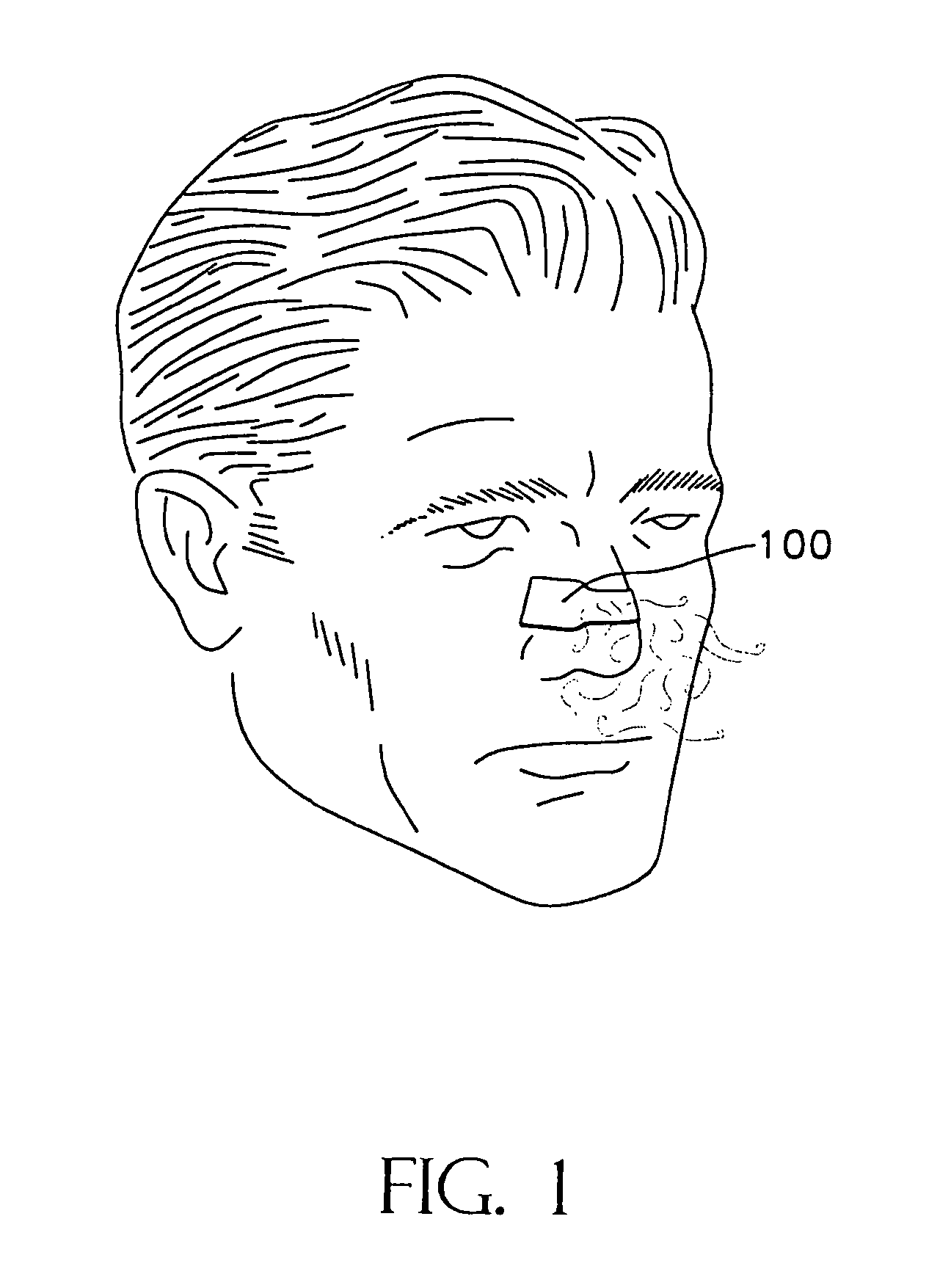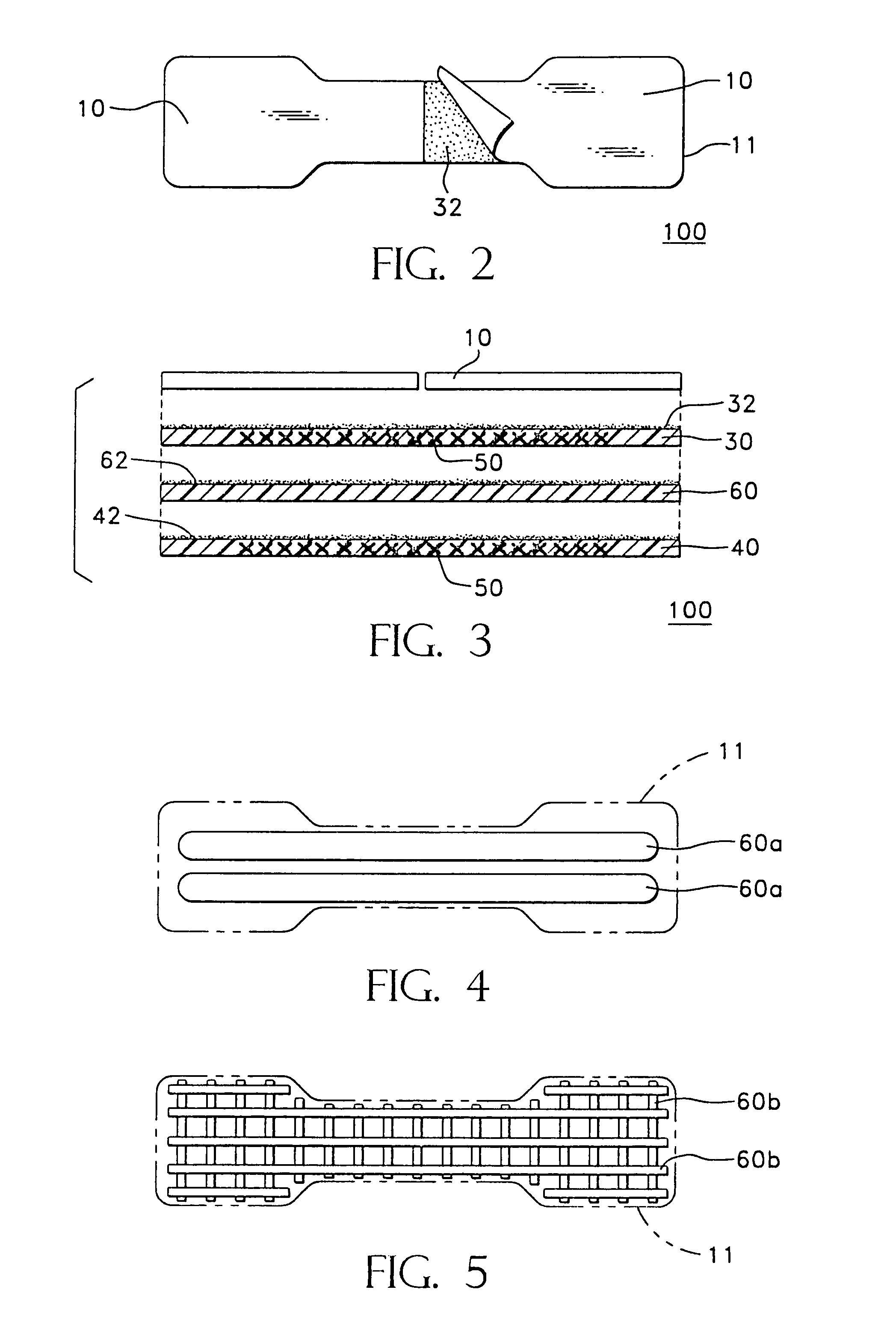Adhesively applied external nasal strips and dilators containing medications and fragrances
a technology of adhesive backing and nasal strips, applied in the field of nasal strips, can solve the problems of difficult nasal breathing, people being forced to open their mouths, and difficulty in breathing through the nose, so as to prolong the olfactory effect of fragrance, reduce the amount of adhesive residue, and improve the effect of olfactory
- Summary
- Abstract
- Description
- Claims
- Application Information
AI Technical Summary
Benefits of technology
Problems solved by technology
Method used
Image
Examples
Embodiment Construction
[0034]This invention provides adhesively-applied nasal strips and dilators and methods for substantially preventing a nasal wall tissue of a nose from drawing in during breathing. As used herein, the following terms are defined:[0035]“aromatic medication” refers to therapeutic substances and compounds which can be consumed by inhaling through the nose, such as a medicated vapor or gas, which have potential or demonstrated efficacy in helping patients breath easier or better;[0036]“medicated” and “medicine” will be used broadly to connote the inclusion of any of a variety of treatments including aromatic, topical and transdermal medicines, anti-viral, anti-microbial or anti-bacterial agents, scents, salves and other therapeutic substances which might be desirable on tissues as discussed herein;[0037]“neat” refers to a fragrance either in its undiluted or unused condition. It can refer to the fragrance on a dilator strip as it is packaged and ready for a wearer to apply to his or her ...
PUM
 Login to View More
Login to View More Abstract
Description
Claims
Application Information
 Login to View More
Login to View More - R&D
- Intellectual Property
- Life Sciences
- Materials
- Tech Scout
- Unparalleled Data Quality
- Higher Quality Content
- 60% Fewer Hallucinations
Browse by: Latest US Patents, China's latest patents, Technical Efficacy Thesaurus, Application Domain, Technology Topic, Popular Technical Reports.
© 2025 PatSnap. All rights reserved.Legal|Privacy policy|Modern Slavery Act Transparency Statement|Sitemap|About US| Contact US: help@patsnap.com



